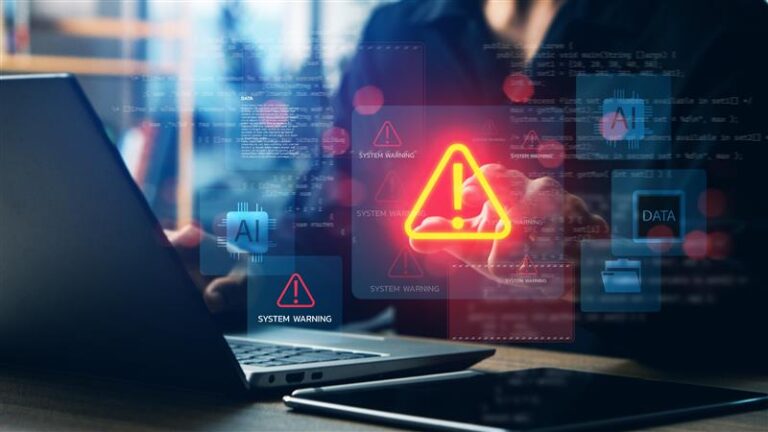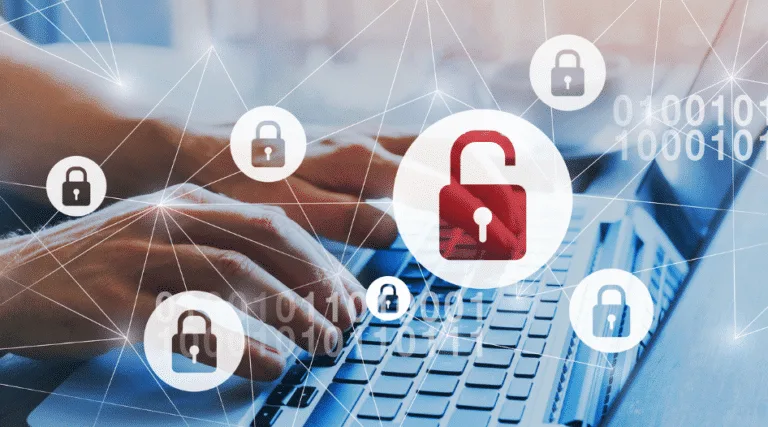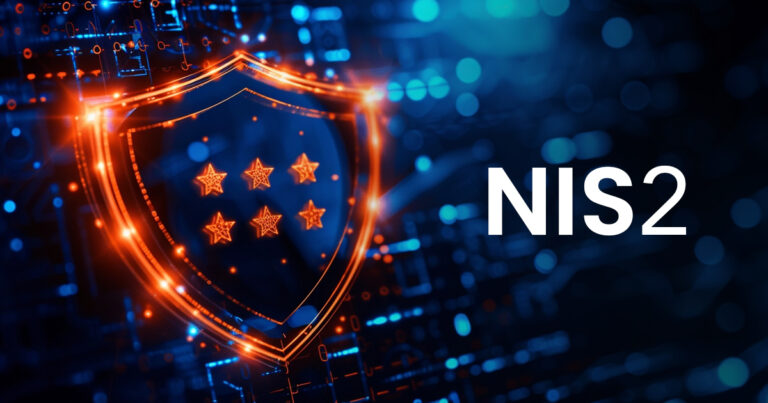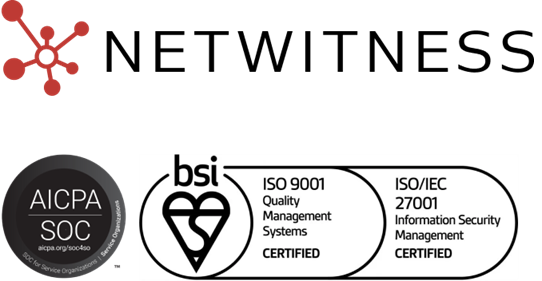Security operations (SecOps) teams are battling a complex and ever-evolving challenge: Keeping an organization secure against cyberattacks from faceless, remote users in a technologically advanced world. With the rise of threats, new technologies, and increasingly sophisticated scams, staying ahead of the bad guys is more important than ever. That’s where security orchestration, automation, and response (SOAR) platform comes in to make your SecOps team more effective against attacks. A security orchestration, automation, and response (SOAR) platform system automates what would be a manual process of identifying cyberattacks and making it easier to respond to those attacks. However, not all SOAR solutions are created equal.
NetWitness Orchestrator, a security orchestration automation and response platform solution from NetWitness, is an invaluable tool for SecOps teams. This platform helps automate many tedious tasks that would otherwise require manual completion or lengthy development. It also quickly identifies risks and provides an easier way to view associated activity in order of how critical they are, so your team can prioritize and focus on the biggest threats. In this article, we will discuss how the NetWitness Orchestrator offers a comprehensive solution to make your SecOps process more efficient and effective.
What is SecOps?
SecOps, sometimes referred to as a security operations center (SOC) depending on the company, is the team in a company or organization responsible for identifying, protecting, and prioritizing potential cyberattacks and securing the company against them. A SecOps team typically consists of a security and first responder team working together to scan the IT environment, analyze threats, and report potential risks while leveraging modern secops tools to enhance efficiency.
What Are Common Problems SecOps Teams Have?
As we mentioned, the world of cybercrime and technology is ever-evolving, and it is only getting more difficult to identify and fight off potential cyberattacks, especially when multiple remote users are attempting to attack at one time. SecOps teams often face many challenges related to the complexity of cyber threats and the increasingly sophisticated nature of attackers. These problems include:
1. Manual Processes That Take Too Long
Cyberattacks must be dealt with quickly and effectively; however, many SecOps teams must manually review each alert or threat and determine how to respond. This can be a time-consuming process that drains resources and leaves teams unable to focus on other important tasks. Not every attack is worth looking into, and finding the ones that are may take too long. NetWitness Orchestrator automates these processes, reducing manual workloads.
2. Inability To Prioritize
Another side effect of manual processes is the inability to prioritize the threats that need the most attention. SecOps teams often face the problem of not being able to prioritize alerts based on their severity because they are looking at each attack individually, which can leave serious threats unaddressed. This can lead to more serious security breaches and a greater risk of data loss or theft. A security orchestration automation and response platform like NetWitness Orchestrator helps prioritize alerts efficiently.
3. Difficulties in Responding to Threats Quickly and Effectively
Given the speed at which cyberattacks take place, it is important that SecOps teams can respond quickly and effectively to these threats. The manual process of reviewing each alert or threat makes this impossible, as there simply isn’t enough time to address each one properly in a timely manner.
4. Difficulty in Understanding the Attack or Threat
The context of an attack or threat can be difficult to understand, particularly when there are new forms of attacks being created all the time. Without having a clear understanding of the reasoning behind each attack, it becomes increasingly difficult to respond and protect against future attacks. Not to mention, if your SecOps team misunderstands the context of a threat, they may not respond appropriately or at all.
NetWitness Orchestrator is designed to address these common problems that SecOps teams face. It automates the identification and threat detection and response process and aggregates data and alerts from your existing security infrastructure in providing comprehensive visibility into all threats so teams can quickly assess risks, prioritize threats, and respond effectively. With NetWitness Orchestrator, SecOps teams can efficiently identify potential cyberattacks and react quickly to protect against data loss or theft.
What Is SOAR?
SOAR or Security Orchestration, Automation, and Response, is a type of software platform that helps SecOps teams better manage the security threats they face. It automates the manual process of identifying and responding to cyberattacks, which can be time-consuming for a team already spread thin. A SOAR system, such as NetWitness Orchestrator, evaluates incoming data from multiple sources and then follows a defined workflow on how to respond. It can even take automated action to mitigate risk to the company.
Benefits of NetWitness Orchestrator
NetWitness Orchestrator is a SOAR platform from NetWitness designed to make SecOps teams more efficient. Using inputs from your security tooling throughout the IT environment, it can aggregate and display threats in a way that prioritizes the most important ones so your SecOps team can take immediate action. This also prevents your team from being bogged down by multiple threats and puts the ones that need to be addressed at the top. Let’s look at the benefits of making the NetWitness Orchestrator part of your SecOps team:
1. Automated Identification and Response
NetWitness Orchestrator automatically collects, standardizes and prioritizes alerts generated across your security technologies and organizes them for your SecOps team. The program then lists those alerts on a dashboard, displaying them in order of how many there are, how much of a threat they pose, and how critical they are for your team to address. When your SecOps team logs on, they can quickly scan for the most pressing threats and put their time and effort towards them.
As we discussed earlier, the manual process of monitoring attacks can be a huge issue for SecOps teams, who have to manually view each threat and decide how critical they are. Plus, NetWitness Orchestrator includes a threat intelligence platform (TIP) which provides important context as to which threats are the most pressing and which are not, leaving out the guesswork.
2. Intelligence-Driven Decisions
Now that your SecOps team is aware of the issues, deciding what to do can be challenging. With the NetWitness Orchestrator, your SecOps team can easily decide how to respond by utilizing its comprehensive workflow and runbook capabilities. The solution will take in all available data and develop a recommended course of action for your team. This ensures that your team responds appropriately to the threat.
3. Improved Efficiency
One of the biggest benefits of the program is the improved efficiency. Instead of manually monitoring each threat, your SecOps team can quickly scan for the threats they need to address and take action or schedule time to investigate them. This leaves your team with more time to focus on other tasks that need more immediate attention.
4. Automation Processes and Human Intervention
Another great benefit of the NetWitness Orchestrator is that it provides several automated features while allowing your team to take the reins on what to do with the information. Sometimes it can be nice to have a program that takes care of your security measures for you, such as on your home computer. However, when it comes to ensuring the safety and security of your business or organization, having a team of experts, like your SecOps team, makes a huge difference. That being said, human error is inevitable. That’s why NetWitness Orchestrator is the best of both worlds. It collects all of the information your SecOps team needs and puts it in one place, so your team can make informed and educated decisions on how to address the attack.
At the end of the day, NetWitness Orchestrator can make your SecOps team even more efficient by cutting down on manual processes and allowing them to see and respond to threats quicker. With this program, you can gain enhanced visibility into threats, improve investigations, and make intelligence-driven decisions that ensure your business is secure and safe from potential threats. This, in turn, leads to better efficiency with your SecOps team and a stronger foothold against cyber-attacks.
What Kinds of Cyberattacks Does NetWitness Orchestrator Assist With?
Unfortunately, there are a variety of cyberattacks that may be deployed against your business. And while we may learn what they are and how to fight them, they are constantly evolving and changing. It’s important to be aware of the types of cyberattacks to understand what they look like, which threats are the most critical, and how to protect your business against them.
1. Phishing
Phishing has become a very popular attack vector in recent years. A phishing attack first appears as an ordinary email or message sent to your business asking you to follow a link to confirm some information. When the link is clicked, it may download malware onto your computer or lead you to an unsecure site, asking you to put in confidential information. These emails will often look real; they may pretend to be people within your company or from a business you may know. It’s important to educate employees about this type of attack and encourage them to only open emails and links from known senders or verified accounts.
2. Malware
Malware, or malicious software, is another common type of cyberattack designed to damage or disable computers and systems. It can be spread through email, websites, downloads, and other sources of digital content. Malware can be used to steal data, install and enable viruses, create backdoors, or even disrupt system processes.
3. Ransomware
Ransomware is a type of malware that encrypts the data on your computer and asks for money in order to unlock it. This type of malware is typically delivered through phishing emails or otherwise makes its way in through endpoints within your environment. It’s important to make sure any files or downloads are checked thoroughly before they are opened, as this is often how a ransomware attack is initiated.
4. Viruses
Viruses are another type of malicious software that can be downloaded onto a computer. They can also be spread through email, downloads, and other sources and are designed to damage or disrupt your system processes. Viruses are used to steal data, delete files, and even encrypt data if it’s not caught in time.
As you can see, there are many types of cyberattacks that are constantly being enhanced and changed to suit the needs of the attacker. What once started as malware designed to damage your computer and cause chaos has now progressed into more threatening software like ransomware and spyware. It’s incredibly important for you, your business, and your SecOps team to be aware of each type of cyberattack. This can go a long way in keeping your company secure and safe from outside attackers.
Being educated can prevent a majority of cyberattacks, but it’s best to be cautious when it comes to your business. You don’t want to take the chance that there could be a vulnerability in your security that you are unaware of. That’s where NetWitness Orchestrator, a security orchestration automation and response platform (SOAR) solution, can help detect and respond to cyberattacks. It aggregates alerts and other data from your security infrastructure including monitored networks, applications, and endpoints in order to identify potential threats. It then provides SecOps teams secops tools and with the necessary context and guidance to determine how best to respond.
Don’t leave your security to chance; make sure your business is protected with NetWitness Orchestrator. As a cyber security orchestration and automation and security orchestration automation and response platform, NetWitness Orchestrator can provide your business with the visibility, intelligence, and response needed for improved security operations. Visit our website to learn more about our security solutions and demo our product online to see how it would protect against a phishing attack.




